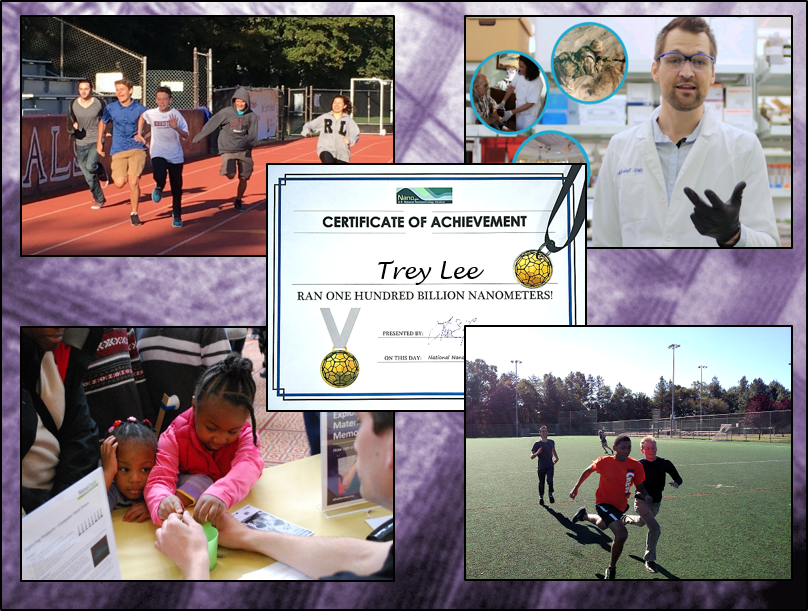After such a long time (a couple of years at least), it was nice to come across this update on the US government’s national nanotechnology efforts. From a October 7, 2022 (US) White House Office of Science and Technology Policy (OSTP) news release (h/t JD Supra October 17, 2022 legal news update),
Today [October 7, 2022], to mark National Nanotechnology Day, the White House Office of Science and Technology Policy (OSTP) and the National Nanotechnology Coordination Office (NNCO) are making key announcements that aim to advance the Biden-Harris Administration’s efforts to leverage the promise of science and technology to benefit all Americans. They also complement the Administration’s ongoing CHIPS and Science Act implementation efforts that will ensure the United States remains a world leader in the industries of tomorrow.
“National Nanotechnology Day is an opportunity to celebrate the NNCO’s – and Biden-Harris Administration’s – efforts to advance research breakthroughs on the nanoscale that impact nearly every scientific discipline and lay the foundation for emerging fields and technologies,” said newly announced National Nanotechnology Coordination Office Director Dr. Branden Brough. “As evidenced by this week’s Nobel Prize announcements highlighting work in quantum information science and click chemistry, the nanotechnology community is leveraging the Nation’s investments in research at the level of atoms and molecules to find solutions to address today’s most pressing challenges, including climate change, pandemic preparedness, and domestic microelectronics manufacturing.”
Biden-Harris Administration’s National Nanotechnology Challenge, Nano4EARTH
The National Nanotechnology Coordination Office is announcing the inaugural National Nanotechnology Challenge, Nano4EARTH. Nano4EARTH will leverage recent investments in understanding and controlling matter at the nanoscale to develop technologies and industries that address climate change. Nano4EARTH recognizes the role nanotechnology plays in: Evaluating, monitoring, and detecting climate change status and trends; Averting future greenhouse gas emissions; Removing existing greenhouse gasses; Training and educating a highly skilled workforce to harness nanotechnology solutions; and developing Higher resilience to – and mitigation of – climate change-induced pressures for improved societal/economic resilience.
The NNCO supports the National Nanotechnology Initiative (NNI), a White House-led initiative that coordinates the nanotechnology R&D activities of 20 federal government agencies. Identified in the 2021 NNI Strategic Plan, National Nanotechnology Challenges are a new mechanism to mobilize and connect the NNI community so it can help to address global societal challenges.
Members of the NNI community – the scientists, engineers, entrepreneurs, and government leaders developing solutions at the nanoscale – are invited to participate in Nano4EARTH! By doing so, they can support the United States’ goal of achieving net-zero carbon emissions by 2050 and inspire and build the STEM workforce capacity that will help develop and implement climate change mitigation and resilience solutions. Links to relevant agency programs, information about the public kick-off workshop, and a link to join a mailing list to get involved can be found on the Nano4EARTH webpage. The Nano4EARTH kick-off workshop (to be held in early 2023) will serve as an information-gathering exercise to identify key feasible outputs of the challenge and effective ways to measure success.
National Nanotechnology Coordination Office (NNCO) Leadership
The White House Office of Science and Technology Policy and The National Nanotechnology Coordination Office are announcing Dr. Branden Brough as the new Director of the National Nanotechnology Coordination Office (NNCO) and Dr. Quinn Spadola as its Deputy Director.
Dr. Brough joins the NNCO from the Molecular Foundry, a U.S. Department of Energy-funded nanoscale science research center that provides users from around the world with access to cutting-edge expertise and instrumentation. He will also serve as OSTP’s Assistant Director for Nanotechnology. As the Molecular Foundry’s Deputy Director, Dr. Brough was responsible for helping guide the organization’s scientific plans and initiatives, while also managing the center’s operations. Before joining the Molecular Foundry, Dr. Brough worked at the NIH’s National Institute of Arthritis and Musculoskeletal and Skin Diseases, where he led strategic policy and planning activities, as well as Congressional and public outreach efforts. Dr. Brough received his Ph.D. in Mechanical Engineering – focusing on the integration of synthetic motor molecules and natural self-assembling proteins into micro/nanotechnologies – from the University of California, Los Angeles (UCLA).
Dr. Spadola was the Associate Director of Education for the National Nanotechnology Coordinated Infrastructure (NNCI), a network of open nanotechnology laboratory user facilities supported by the National Science Foundation, and the Director of Education and Outreach for the Southeastern Nanotechnology Infrastructure Corridor NNCI site at the Georgia Institute of Technology. Prior to joining the Georgia Institute of Technology, Dr. Spadola was the Education and Outreach Coordinator and a Technical Advisor to the Director at NNCO. She received her Ph.D. in physics from Arizona State University and her MFA in Science and Natural History Filmmaking from Montana State University.
Once again, the Climate Change National Nanotechnology Challenge (Nano4EARTH) webpage is here and apparently they aren’t quite ready yet but,
The NNI is planning a Nano4EARTH kick-off workshop! Join our mailing list to get all future updates!
